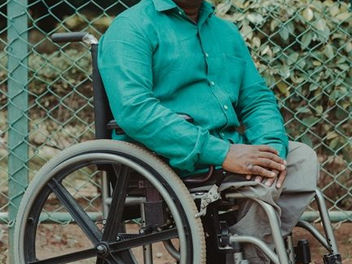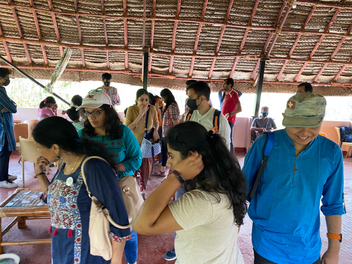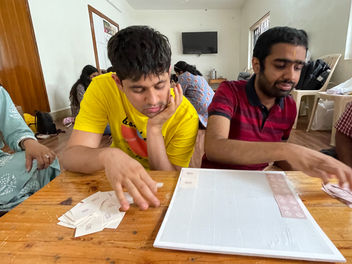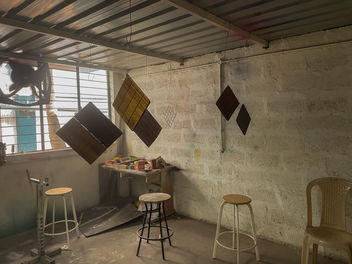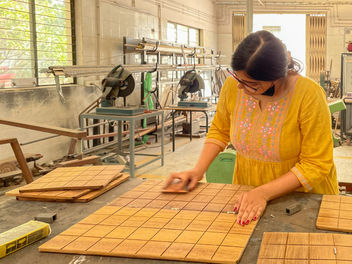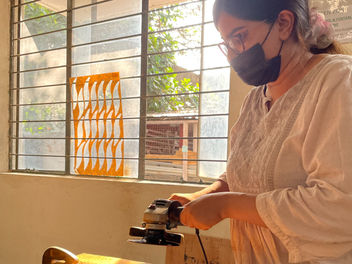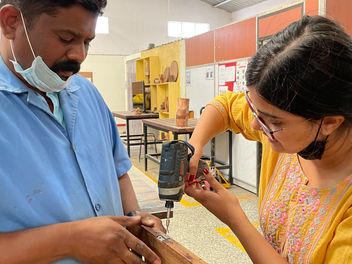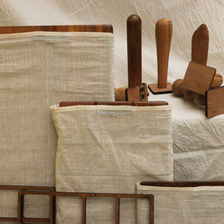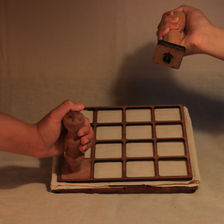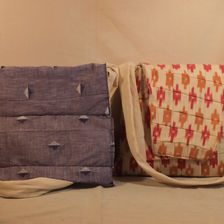
INTRODUCTION
Project Rooh: Play For All
In our exclusive world, insensitively designed workspaces, public areas, and community spaces hinder the independence and development of individuals with special abilities. Access to play-based learning is challenging for them, despite its essential role in cognitive stimulation.
SOLUTION
Project Rooh is an initiative that creates inclusive and playful spaces and makes play more rewarding by adding monetary benefits. It curates multi-level play sessions for organizations and Specials Schools that work with or for people with special needs.
DURATION
5 Months (Jan 2022 - June 2022)
TEAM
System Designer (Me), Product Designer
MY ROLE
Strategy, Research, Game Design & Development,
BREAKDOWN
ORGANIZATION
Thesis Collaboration with Microsoft Research ( Ludic Design )
THEMES
Multi-Sensorial, Inclusive, Game Play, Inclusive Workspace
WHO Young adults with disabilities | Primary Caregivers | NGOs
WHAT Play | Evolving | Workspace | Inclusive
WHY Break work culture stereotypes | Lack of inclusive opportunities | Gender Bias
PROBLEM
More than 1 billion people across the world have some kind of disability which contributes to roughly 15% of the population (WHO), yet their basic needs for social security, individual dignity and meaningful employment remain unmet.
People with disabilities are more likely to experience adverse socio-economic outcomes in countries such as India caused by a lack of awareness, effective pedagogy, and infrastructure, such as less education, lower quality of life, lesser employment rates, and higher poverty rates.
People with disabilities encounter significant difficulties accessing play-based learning due to the specific accessibility and assistance they require, resulting in inherent limitations and restrictions on their participation.

User testing conducted with the final prototype.
USER GROUP
There are three sets of user groups. The first one belongs to organizations that work with or for people with disabilities. Then there is the user group of the makers/players who are at the
center of the system. They are under the care of their primary caregivers who are a big part of the third persona, i.e of the customer.

Methods Used: User Persona ( above), Stakeholders Map, Empathy map
PROCESS
I chose the Double Diamond Design Model. This process involved extensive iterations and ongoing communication
with our users, emphasizing our commitment to creating a user-centric and inclusive design.

RESEARCH
Leading Questions
-
Why do PwDs face such a stark gap in every aspect of their life? Why is this gap more prominent for women with disabilities?
-
What expectations do primary care givers have and how do they influence the beneficiaries?
-
What is the existing work culture for PwDs?
-
What kind of interventions/tools make their daily life easier? Why are these tools exclusive to inclusive spaces only?
-
How does judgment affect the diagnosis and why is there a delay in diagnosis of women as compared to men?
-
Is it insensitive if the disability is not addressed?

Curated fun and playful activities with the user group to better understand
Secondary Research
Productive
Pwds have 8-10% higher productivity rates and 5% lower attrition rates. (BCG)
Gender Bias
The International Labor Organization (ILO) reports that women earn 20-30% less than men worldwide (ILO Geneva, 2018)
Inequality
Gender-wise analysis shows that 47.2% of the men among the PwDs were working while the figure was only 22.6% in the case of women with disabilities. (Pillay 2019)
Demographic
More than 1 billion people across the world have some disability which contributes to roughly 15% (WHO) of the population.
Employment
According to the Bureau of Labor Statistics, the unemploy- ment rate for people with disabilities is more than double that of those without: 9% compared to 4.4% as of September. (Women Lobby 2011)
Barriers
People with disabilities experience loneliness and social isola- tion at much higher rates than those without disabilities.
Assistive Technology
Assistive technology (AT) is any item, piece of equipment, software program, or product system that is used to increase, maintain, or improve the functional capabilities of persons with disabilities.
Our project aimed to create a user-centric system by harnessing assistive technology, prioritising accessibility and enhancing the overall user experience.
Primary Research conducted at Chiranthana, proVISION ASIA, Antharbhaava Foundation that work with people with special needs.
Primary Research
Chiranthana - School for holistic development and vocational skills for special needs (Bangalore, India)
Curated creative activities for the children. Some important takeaways-
-
Realised that the primary caregivers become solely responsible for the child with disability, even when they grow up.
-
For economically backward families, having food on the table matters more than taking their children to special school.
-
Observed how the children liked responsibility and independence.
proVISION ASIA (Bangalore, India)
proVISION ASIA works with adult women and children. They run EmpowerHer and Friendship Circle. We curated activities for both. Some important takeaways-
-
Individual Education Plan is implemented for all the beneficiaries. It helps track the progress for each beneficiary
-
Children love the routine and texture play.
-
Young adult women become a part due to their desires to gain communication skills , learn spoken english and basic computer skills.
Antharbhaava Foundation (Bangalore, India)
Started with the sole objective of skill development and economic empowerment of PWD's by optimising their potentials. We interacted with them during their work day. Some important takeaways-
-
Given the right training and encouragement persons with dis- abilities can perform and be gainfully employed
-
Buyers cannot expect perfect products.
-
Competency mapping is used to assess the maker skills.
Play Research
Being a gaming enthusiast my whole life, I took charge of researching all kinds of games around me. My goal was to better understand the concept of play.
Some games I looked at and compared- Othello, Patchwork, Candy Crush, Tangrams. I then conducted a series of play sessions with common games like card games and Jenga.
The next session was conducted in parts. Games like Hide and Seek, Doctor Doctor, Chicklets, Chained Up, etc were played. The parks and mini games there were explored. This ended with holi, a fun and playful festival in India. This session helped understand the aspect of play for everyone.
After the game, I held an informal discussion withy the players about what they linked, what emotion was evoked and how they felt.
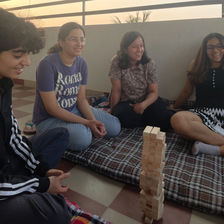
ANALYSIS
Systematic process through guides and a moderator/ facilitator
Labelled as different because they are differently-abled
Gaps in the system is what causes exclusivity
Need for larger inclusive system
How might we create an evolving and playful system with a profitable workspace for young adults with disabilities and the interested stakeholders in the current Indian context of urban cities.
IDEATION
Making the final output involved many interactions with the stakeholders, especially the NGO organisers, the people with disabilities (players/makers) and their primary caregivers.
We tried variations of simple games and activities with various makers to make this happen.
Another important aspect for us to focus on was the employment opportunity for people with disabilities. We wanted the games to have something more than just the play factor.
We decided to work with colourful cloth patches because the makers liked its touch and feel and the possibility of making products using those patches were endless.

Testing out different games and making various paper prototypes.
DEVELOPMENT
During development, we chose to work with 2 NGO's. Mitra For Life and proVISION ASIA. We wanted to try out multiple prototypes with users to fulfill our goal of designing an inclusive system.
PHASE 1:Trying various types of games and interactions in group settings.
PHASE 2:Trying out a set of games / interactions of different levels using paper prototypes.
PHASE 1:NATURAL SETTING
Mitra For Life: Mitra Hubba
Aim:
To facilitate a creative and engaging workspace for a large group of neuro-diverse and neuro-typical children from different economical backgrounds.
Learnings: Understanding how primary caregivers communicate and support their children. Witnessed the children’s interests and creative inclinations. Relevance of our instructions and structure.
proVISION ASIA: EmpowerHER
Aim:
To work closely with a team of women with disabilities and understand the gaps in the existing work culture through this project.
Learnings: They all have different skill sets which would have been useful in our system although their financial limitations along with unmet logistical requirements, led to the failure of this system exploration.
Phase 1 of development conducted at Mitra For Life: Mitra Hubba and proVISION ASIS.
PHASE 2:PAPER PROTOTYPE
Mitra For Life
Aim:
To test the paper prototype of the games Alankara and Nirman. To test the adaptability of the system with neurodiverse players.
Learnings:
-
Repeated engagement with the same game increased their efficiency.
-
They all have skills that can be used for professional set ups in various aspects of our system.
-
Validation of our system. Our game interactions were designed for all kinds of users.
proVISION ASIS:
Aim:
To test the paper prototype of the games Alankara and Nirman. To test the adaptability of the system with women with physical disabilities.
Learnings: Unlike neurodiverse players, thses players enjoyed the last few levels. The levels seemed the be woking.
Phase 2 of development conducted at Mitra For Life and proVISION ASIS.
FINAL IDEA
Project Rooh is an initiative that creates inclusive and playful spaces and makes play more rewarding by adding monetary benefits. Project Rooh curates play sessions for organizations and Specials Schools that work with or for people with disabilities.
Final components: Games (Alankar, Nirman) , App , End Products (Gender Neutral Bag) , Website

Our final journey map will all stages : Player Acquisition, Orientation, Space Interaction, Games, Production, End Product, Sales Channel with continued play and expert supervision. There are 2 more previous versions of journey map in the process map section. Click here to view them.
Some behind the scene shots of the making.
GAMES
The games, Nirmana and Alankar have been designed to facilitate creativity in a safe and playful environment for everyone including people on the spectrum and people with physical disabilities.
All the tools used in Project Rooh have been designed keeping inclusivity and accessibility in mind. The different levels of the game allows players of different capabilities and interests to have a playful interaction. The end product of these games are gender neutral bags. This makes the players makers.
Audio game guides

GENDER NEUTRAL BAG
The Rooh gender neutral hand bags are a result of inclusive and playful interactions with the system games i.e. Alankar and Nirman. The Rooh gender neutral bag is an attempt to expand the horizons of bag design into accessible design by making it compatible for people with disabilities.
Product Features
-
Compatible with wheelchairs & trolley bags
-
Segregated compartments for water bottle, lap- top, key holder, mobile phone and pen holder.
-
Broad & Long shoulder strap
-
Gender neutral form and palette
-
Zip free for accessibility
-
Spacious
-
High contrast interior lining

WEBSITE
The Rooh Project website is a middle point between the customers and the brand. It is used to sell the bag nets and create awareness with minimally curated information to create awareness.
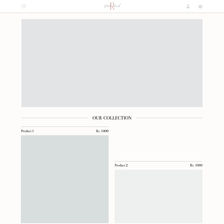
APP
The Rooh Project app is designed to act as a moderator for makers that work from home. All the makers cannot be supervised at all times. The ones that play from home and supply the patches use the app to understand the rules and keep a track of the number of games they have played and the amount of money they have earned.
Product Features
-
Minimal Design
-
Big Surface Area to Click
-
Organized information

User Testing
This user testing was done at Srushti Montessori to try the Project Rooh games with a different set of users to test its adaptability and evolution.
The childern played both Alankar and Nirman. Seeing them count the number of patches at the end of the play session gave us ideas of how to make this game more suitable and fun for children.
The children had Autism. They had a great time playing the game. The best aspect was that they invented a variation of the game on their own. That is the beauty of the evolving system of Rooh.




TAKEAWAYS
There were many ups and downs during the process. The user testing and interaction helped enhance the system. The first failure we encountered was the choice of the maker group. We were working with lower-middle-class people with physical disabilities. The initial idea was to work with them during the whole duration of the project and develop products based on their skills and hobbies. This was not possible because, after three sessions, they started backing out due to monetary reasons. We then decided on two things, not to work with a single set of users and to begin with makers that are not financially constrained.
For the brand, the initial idea was to position it as chic and luxurious to sell products made by the patches produced during the game. These products would be sold on a huge margin and would have targeted the upper-middle-class audience. The range of products included lifestyle products of different types. The problem with this idea was that the relevance of those patches and their journey was getting sidelined. Those sets of audience would definitely buy these products, but not all would understand the context of it being made by people with disabilities. This led us to design fast-moving consumer products like gender-neutral bag nets and to target a different set of buyers. This set of buyers were involved or passionate about this topic and would definitely buy and understand the product.


Presenting the final output at the MSR office in Bangalore.
PROCESS MAPS
User Journey Map, Backhand System Map, Initial User Flow (1/2), SWOT Analysis, PESTEL Analysis, Business Model Canvas, Influence Interest Matrix, and Earning Potential Breakdown.
.
Click on the maps for a pop up.
 |  |  |
|---|---|---|
 |  |  |
 |  |  |
 |








